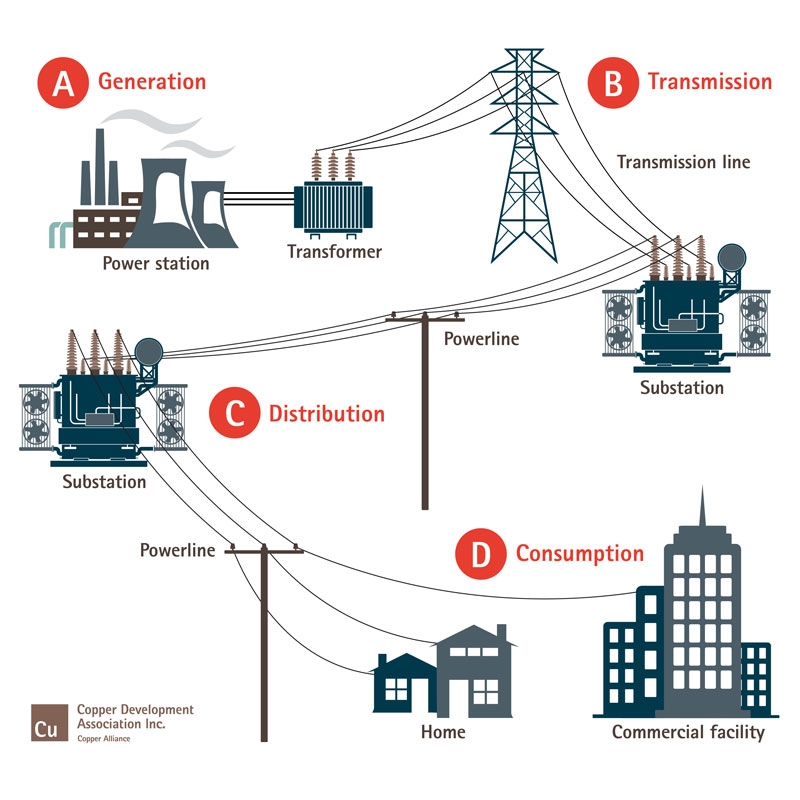Copper is an integral part of grid infrastructure because of its reliability, efficiency and performance. Copper’s properties are vital to the interconnected network of plants, devices and lines that generate and distribute electricity and power throughout the country.
There are several key pieces of infrastructure that are built to support the delivery of electricity to consumers.

High Voltage Transmission
According to the Edison Electric Institute, the U.S. electric transmission network consists of more than 600,000 circuit miles of lines, 240,000 of which are considered high-voltage lines (230 Kilovolts and greater). These networks are designed to transport energy over long distances with minimal power losses. Copper is a key material component of transmission, which consists of structural frames, conductor lines, cables, transformers, circuit breakers, switches and substations.
Underground Transmission
- Longer life expectancy
- Reduced maintenance costs due to less exposure
- Protection from weather and other external hazards
- Advantages of copper cables
Microgrids
Microgrids are localized grids that can disconnect from the traditional grid and operate independently. Because of this, microgrids strengthen grid resiliency by helping to alleviate grid disturbances by allowing for faster system response and recovery. Microgrids also support a flexible and efficient electric grid by enabling the integration of distributed energy resources like solar and wind energy. The use of localized energy lowers energy losses in transmission and distribution, further increasing efficiency
